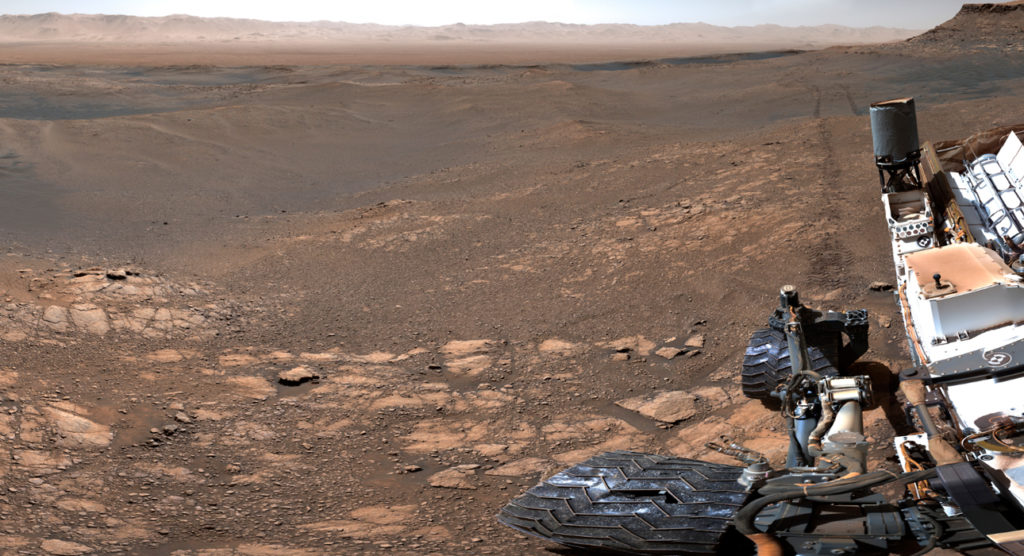The goal of the NIAC project is to collect the necessary samples before human arrival on Mars, planned by NASA, the Chinese National Space Agency and SpaceX, by 2040, by 2033 and before 2030, respectively, according to the space agencies’ respective statements. Human arrival will undoubtedly complicate the search for indigenous Martian life, so from an astrobiological perspective, these planned manned missions to Mars have set a very strict timeline for the search for life on pristine Mars.
As noted at the 2019 NASA Carlsbad Conference, there is good reason to believe that:
– Life originated on Mars using the same geoorganic chemistry that originated life on Earth.
– Martian life persists today on Mars, in near-surface ice, at low altitudes, and in caves where temporary liquid brines are present—environments that support microbial life on Earth today.
– Martian life must use information polymers (for example, DNA); Darwinian evolution requires it, and Darwinian evolution is the only way to organize matter to create life.
– Although Martian “DNA” may differ (perhaps radically) in its chemical composition from terrestrial DNA, the “polyelectrolyte gene theory” limits the universe of possible alien DNA structures. These structures ensure that Martian DNA can be concentrated from Martian water, even if it is very dilute, and even if the Martian “DNA” is different from Earth DNA.
On Mars as it exists today, information polymers cannot be generated without life (unlike other less reliable biosignatures such as methane), ensuring that life will not be “detected” if it is not present (the “false problem” operation”). However, as Rummel and Conley note, “the Mars community is not convinced that a mission to detect existing Martian life is a high priority.” So NASA’s current flagship mission to Mars, based on the results of a decade-long 2012 study, involves walking to collect old, dry rocks to be hidden and then returned to Earth to study evidence of past life.
However, manned missions also present opportunities that NASA intends to take advantage of. Manned missions to Mars will use materials found on Mars itself “in situ”, particularly near the water ice surface. From this water fuel (methane and oxygen) and atmospheric carbon dioxide will be produced for the return trip to Earth. Water ice will be mined on a scale ranging from tens to hundreds of tons. Additionally, to maximize the likelihood of the crew’s safe return to Earth, robotic operations to mine tons of near-surface water ice will be carried out before the first human astronauts arrive.
Thus, water extracted in preparation for human arrival is correctly considered an extremely large-scale astrobiological specimen, much larger than dry buried rocks. Because the mined water ice is delivered along with dust, which sweeps the entire accessible surface of Mars through dust storms, this huge sample will effectively enable a highly sensitive survey of the entire accessible surface of Mars for the existence of life. This NIAC project will provide an “independent life detection” (ALF) system capable of extracting genetic polymers (DNA or foreign) from these large ISRU water samples. ALF is agnostic because it uses what synthetic biology has taught us about limited kinds of Darwinian genetic molecules. ALF also offers tools for in situ partial analysis of polyelectrolytes.
As a complementary system, ALF imposes negligible additional burden (in terms of mass and energy consumption) compared to the investment in water extraction at this scale. Despite its small size and low cost, this instrument will allow science to set a strict lower limit on the amount of biosphere on the accessible surface of Mars. And this will happen before Homo sapiens becomes a multiplanetary species. And “multi-planetary” is the correct term. This optional ALF system can be used on all celestial bodies where water will be produced to search for and analyze life, native or introduced, terrestrial or alien. This includes Europa, Enceladus, the Moon and exotic locations on Earth.





